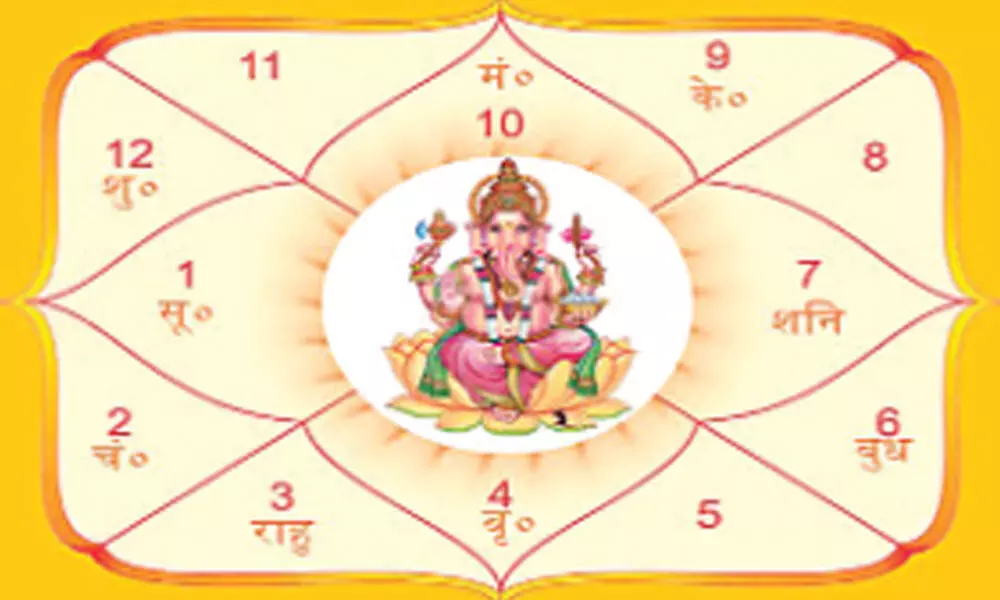Truth, poetry, myth & meaning of Astrology

Astrology...what is it?
Simply put, it is the study of the movements and relative positions of celestial bodies interpreted as having a correlation with human affairs and the natural world astrologists say..
As Robert Hand puts it, Astrology aids "the day to day observational experience that the Universe is not dead and life on Earth is not meaningless. Closely related to that is the day to day experience that I and the Universe are one."
To be honest, it is not a science. It is not a religion and it is not a scapegoat.
Astrology is truth, poetry, myth and meaning, a framework for universal connectedness, soul-making, a cosmic magnifying glass, a reflective pool for the spirit, catalyst, inspiration, macrocosm, dream and vision, wish and cosmic drama; a soul capture, an interpretive song of the cosmic miracle of you: as you are, as you imagine you could be or want to be, as you have been.
Before getting into it further, let us have a look at the Western and Vedic Astrology, al beit a brief one.
All of us Indians at one point of the time or the other, might have come across 'Jathakam".Except for a section which does not believe in the traditional concepts or which discards such beliefs, 'Jathakam' or 'Janam Kundali' plays a vital role in life. More so when it comes to marriages etc. We need to depend on an authority for drawing it by giving the exact time of the birth of the child, date and place.
No unified approach is used by most Western astrologers. They may favor using Outer Planet transits or Progressions or Directions for their primary predictive tool, and some include additional bodies like asteroids, the comet Chiron, Arabic Parts (Greek Lots), Fixed Stars, Hypothetical Points, and Uranians and Plutonians, or even adopt radically different approaches like the Huber method, Evolutionary Astrology, or Symmetrical Astrology (aka Cosmobiology).
Similarly, there are literally thousands of Vedic astrological approaches, including -- among the most popular systems -- Parashari, Jaimini, Laghu Parashari, Krishnamurti Paddhati, and Shri Pati Paddhati. In point of fact, the "Gita" of Vedic astrology, called Brihat Parashara Hora Shastra, is actually a compendium of independent approaches, some of which actually contradict others. This has led some Jaimini astrologers to call their approach Parashari (since there are many Jaimini chapters in BPHS), further confusing the issue).
What Are The Differences Between The Two Systems?
The choice of the Zodiac makes for it. Tropical Zodiac. is used by Western astrologers where the beginnings of the twelve signs are determined by the Sun's apparent orbit around the Earth, i.e. the onset of the four seasons, i.e. when the Sun crosses the Equator (going North at Spring which defines Aries and South in the Fall indicating the beginning of Libra) and its uppermost and lowest points (the Summer and Winter Solstices).
Vedic astrologers, on the other hand, use the Sidereal Zodiac, which is based upon the physical positions of the constellations in the sky. They choose a starting point (most commonly the place in the sky opposite to Spica) for the beginning of Aries, and proceed in equal 30 degree segments for subsequent signs. In addition, most modern Western astrologers use one of the many house systems that places the degree of the Ascendant as the beginning of the First House, with either unequally- or equally-sized houses. Vedic astrologers, by and large, use Whole Sign Houses, where the Ascendant can fall anywhere in the First House, and each house comprises all of one sign. Many also use Bhava/Shri Pati houses for a portion of their work.
Western astrologers use an assortment of aspects (we can call it a direction in general).
Vedic astrologers use a different approach: each planet associates with all planets in the same house, and aspects the opposite house and any planets in that house. Mars, Saturn, and Jupiter also have additional (unilateral) special aspects to both planets and houses.
Western astrologers also place importance upon aspect patterns like Grand Trines, T-squares, Yods, etc. which are unused by Vedic astrologers. However, while many Western astrologers employ the seven whole chart shapes originated by Marc Edmund Jones (e.g. Bucket, Splash, etc.), Vedic astrologers have a very large set of delineations of whole chart patterns, seen as yogas.
In Western astrology, retrograde planets are seen as weak, but since Vedic astrology is oriented towards how planets appear in the actual sky, retrograde planets are seen as strong (because planets that are retrograde are at their closest approach to the earth, and therefore visibly both brighter and larger).
Western astrologers also see planets occupying the sign opposite to the sign they rule as weak (which they call debilitated), while Vedic astrologers do not see such sign positions as weak.
Modern Western astrologers do not believe in the concept and use of combustion ( when a planets is near the Sun), but Vedic astrologers incorporate combustion as a primary element in their charts( a planets is weak when within 6 degrees of the Sun (and very weak within 3 degrees of the Sun).
Some Western astrologers interpret 8 lunar phases, but they generally don't assess Lunar strength by phase. Vedic astrologers place great importance on Lunar phase, and delineate 30 different Tithis, and consider the Moon as weak when it's within 72 degrees of the Sun, and strong when within one sign of opposite to the Sun. (They also see the Moon as weaker when waning than when waxing.)
Vedic astrologers consider true planets (Mercury through Saturn) that are within one degree of each other as at war, and this indicates a major weakness. This is not used in Western astrology.
When a planet is in the same sign in both the natal chart and the Navamsha chart (with the exception of it being in fall), this gives the planet strength, (in Vedic astrology), but this is not used in Western astrology.
In Vedic astrology, planets get directional strength (Dig Bala) by occupying specific angles: Jupiter & Mercury in the 1st, Moon & Venus in the 4th, Sun & Mars in the 10th, and Saturn in the 7th. Western astrologers do not use this concept.
The status of a planet's dispositor is rarely focused on in Western astrology, but in Vedic astrology, each planet's dispositor is seen as the soul of the planet, and is therefore very important. In fact, while exalted planets in Western astrology are always seen as very strong without qualification, in Vedic astrology, if the planet ruling the sign occupied by an exalted planet is weak by sign, then the exalted planet is not seen as strong. Similarly, Fallen planets are seen as invariably weak in Western astrology, but in Vedic astrology they are strengthened if their dispositor is strong, angular, or meets other criteria. (Shall we call this inclusive Astrology?)
Mutual reception is used by some Western astrologers and by all Vedic astrologers. In Vedic astrology, it is called a Parivartana yoga, and has extensive interpretive meanings including strengthening planets in both the natal and divisional charts.
While Western astrology recognizes Saturn as challenging, the concept of benefic and malefic planets is employed to a much greater extent in Vedic astrology. E.g. Mercury is benefic unless solely under the influence of other malefics, the Moon is benefic unless within 72 degrees of the Sun, and Jupiter and Venus are always benefic. The Sun, Mars, Saturn, and the Nodes are malefics, scholars point out.
The rulership of houses is used by some Western astrologers, but is at the core of Vedic astrological interpretation. The analysis of planetary yogas in the Vedic chart relies mainly upon the houses ruled by individual planets and pairs of planets.
Houses in Western astrology are rarely classified beyond their angularity or lack thereof, and their elemental affiliation. In Vedic astrology, houses are classified by a multitude of criteria including good/bad, upachaya/apachaya (improving or not), kendras & trikonas, marakas, and mo
Western astrologer rarely uses lunar mansions, but Vedic astrologer calls them Nakshatras and used those for 'dasa' calculation and electional astrology (Muhurta), and for natal work. In fact, the use of Nakshatras for Muhurta may even precede the use of the 12 signs in astrology.
Western astrology is rich in methods of compatibility analysis including examining placement of planets in each other's houses, inter-aspects (between the charts), and a variety of combined (e.g. Composite) charts.
Vedic compatibility assessment is primarily done by examining the two partner's Moon positions, examining many Lunar attributes. In addition, the Navamsha chart is used in both for assessing the partner and in timing of relationships (and the changing relationship climate).















